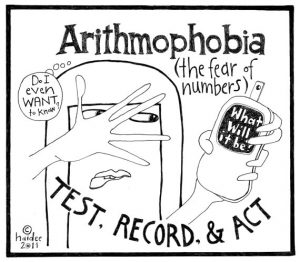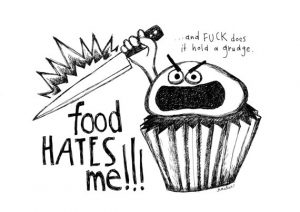100% always equals 100g of any given tested product.
Scenario One Example: Snacks For Life Better Bagel-One of my lab tested products-an 85g bagel
100% minus 33.3% moisture, minus 13.8% protein, minus 2.4% fat, minus 2.7% ash-leaving 47.8% as a combination of available carbohydrate and fiber.
The serving size (always given in grams on any food label and if the gram weight is not listed be very wary) is 85g. The 85g is then multiplied by each of the above percentages and what is left is a combination of carbohydrate and fiber which in this case is 41g. Remember this is a combination of carbs and fiber. Now you want to break these two down and this is where you better know what your ingredients are.
In this case the first 3 ingredients on the bagel are listed as: high gluten wheat flour, wheat gluten, and corn starch-all very high carbohydrate low fiber ingredients and yet the label says 24g carbs 16g fiber and 3g sugar alcohol with 5g net carbs. Very suspicious since these same 3 ingredients have virtually no fiber. From my glucose test below it appears the ingredients are probably correct but the carbs and fiber are falsely stated. If there is a 48g combination left and the label states a 40g combination where are the other 8 grams? 13.8% protein X 100% X 85g = 11.7g protein not the 16g stated on the label. Now add the missing 8g with the 4g less protein and you begin to see the picture; a whooping 12g difference. This bagel would have 36g carbs and 12 grams fiber just if you believe the label and I would say it is probably more like 50g carbs and 2g fiber which is about your average everyday bagel and my glucose test below pretty much says it all. I only tested 56g because eating the whole thing scared me.
Interestingly I had about 5 oz of egg salad with bacon for lunch and when I took my afternoon reading before dinner the reading was 79…not good. It is called “crashing” your blood sugar-goes way up and then way down.
Scenario Two Example: Carb Krunchers Plain Multigrain Bread-One of my lab tested products-2 Slices 56g
In this case it is the ingredients list that is at least partially falsely labeled. The first 8 ingredients are listed as: almond flour, soy flour, bran flour (what the hell is bran flour-haven’t been able to find it) and whole wheat bran flour (nope, couldn’t find that one either) oat flour, sesame flour, unbleached flour, and vital flour wheat (nope, not this one either). The list of high carb ingredients reads like another Stephen King horror novel but the problem is that most people read the list, see ALMOND MEAL, don’t read any further and think yup, must be low carb.
The label for this product states: 11g carbs, 6g fiber, and .5 sugar alcohols with 4.5g net carbs.
Lab testing for this product is: 25g carbs, 4g fiber with a 21g net carbs.
One of things I have noticed over my last year of testing my own blood glucose levels on so many products is that I am pretty consistent. If something has X carbs my readings go up about the same and in proportion every time. The more carbohydrate the higher the spike.
Dr. Richard Bernstein says not to spike over 140 and I try never to do this…except when I am going to knowingly test a suspected product.
Ronald Reagan famously said, “Trust But Verify”. At the signing of the INF Treaty, his counterpart Mikhail Gorbachev responded: “you repeat that at every meeting,” to which Reagan answered: “I like it”…I like it too.




